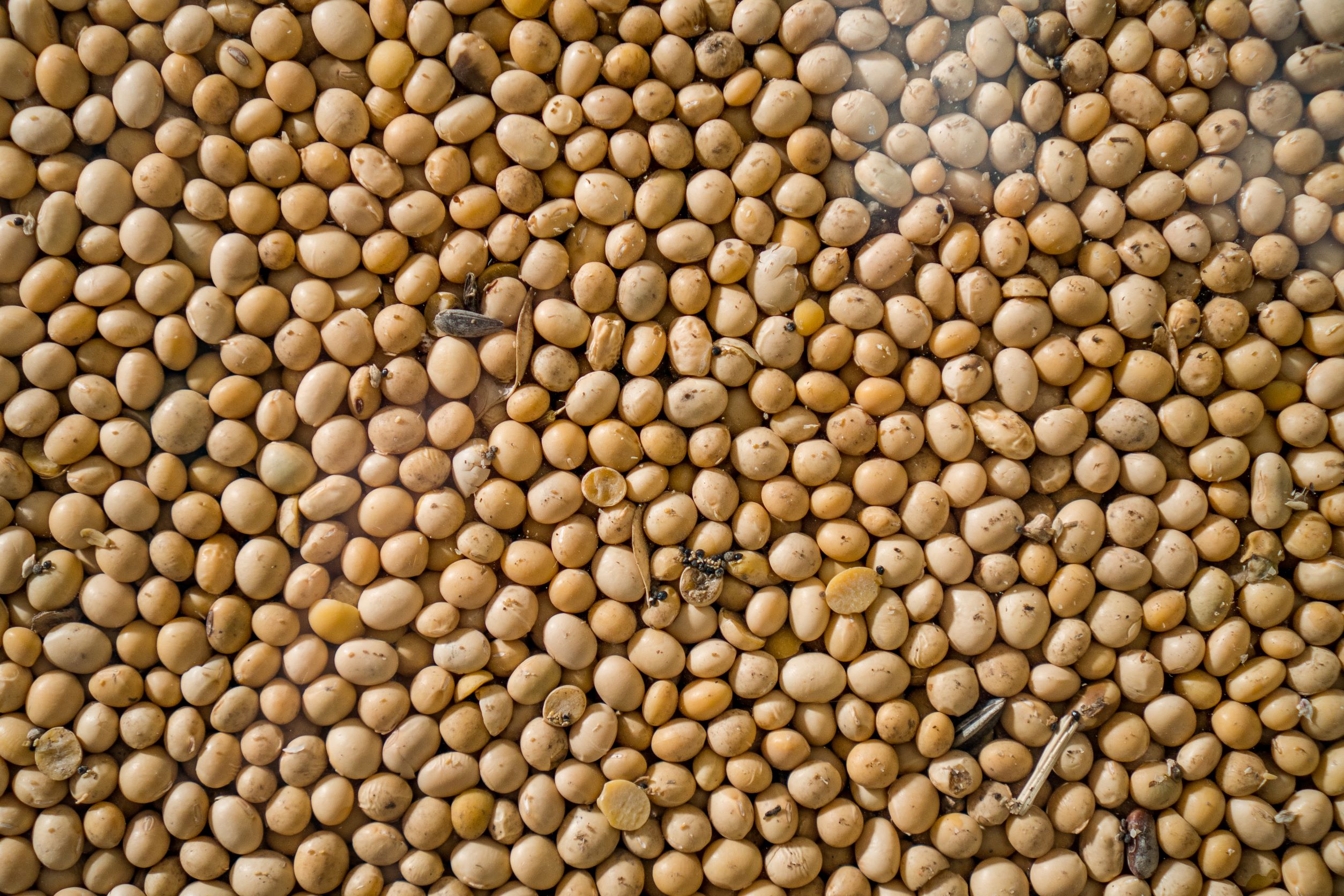
Heat Damage to Agricultural Products
Loss Prevention Bulletin
The Club has encountered costly claims for damage to agricultural products due to the excessive heating of fuel oil in tanks bordering cargo holds. Although the majority of heat damage claims involve agricultural products in bulk, bagged agricultural products may be similarly affected.
Typically the fuel tanks involved
are double bottom tanks. When the
fuel oil is heated, the temperature
of the tank plating rises and affects
the adjacent cargo, possibly causing
deterioration. The nature and
extent of any damage will depend
on the temperature of the fuel oil,
the length of time that the product
has been exposed to hot tanks and
the properties of the commodity
concerned.

Agricultural products, such as soya beans, can be susceptible to heat damage
It is normally self-evident when hot fuel oil in double bottom tanks has caused cargo damage. The cargo surrounding the fuel tank is usually discoloured or scorched, and the extent of the damage may be several metres high. The holds affected are usually towards the stern where double bottom fuel tanks are typically situated. Cargo may also be spoiled if there are heated tanks behind the engine room bulkhead; in a recent case a tank containing hot sludge damaged a cargo of soya bean meal.
If a layer of heat damaged cargo is discovered during discharge it will generally become mingled with sound cargo. Receivers will often reject the whole amount which can result in a considerable quantity of cargo being declined. In one case, a mixture of 500 tonnes of heat damaged and sound soya beans was rejected. In another case, cargo interests rejected over 1,200 tonnes of maize damaged by fuel inside double bottom tanks which had been heated excessively. The associated claims are usually large and may amount to several hundred thousand US dollars.
Moreover, some ports may prohibit the discharge of damaged or rejected cargo, requiring the vessel to proceed elsewhere to dispose of the distressed product thereby incurring additional costs and delays.
Recommendations
Vessels that carry agricultural products that may be susceptible to heat damage should be provided with appropriate procedures designed to minimise the possibility of cargo claims when fuel and fuel residue tanks are heated. As part of this process the location of all tanks bordering the cargo holds to which heat may be applied should be identified. When drafting such procedures the following points should be considered:
When drafting such procedures the following points should be considered:
- The engineers should be advised of the precise nature of the product and the proposed stowage plan well in advance of loading so that a suitable fuel oil management strategy can be adopted to minimise the risk of heat damage to the cargo.
- The IMSBC Code schedule for the cargo should be consulted for any particular requirements regarding stowage in way of heated fuel tanks and engine room bulkheads which are not insulated.
- Where possible, heated fuel tanks which do not border the cargo holds should be used.
- If it is necessary to heat a fuel tank which is in direct contact with the cargo, the oil should be heated to the minimum extent necessary to allow safe transfer. Excessive heating of fuel oil and fuel residues should be avoided. Similarly, hot oil should not be transferred into fuel tanks bordering the cargo holds.
- As far as practicable only the fuel tanks in use should be heated. In a recent case a double bottom tank containing fuel oil that was not being used was inadvertently heated to a high temperature for the entire voyage. Over 600 tonnes of heat damaged soya beans mixed with sound cargo was subsequently rejected by cargo interests.
- Should the cargo deteriorate on passage due to inherent vice, cargo interests may allege that the damage was caused by excessively hot fuel tanks. Consequently, detailed records of which fuel oil and fuel residue tanks were heated and the temperature of the oil they contain should be maintained throughout the voyage.
- Fuel oil heating arrangements, including temperature sensors in the tanks, should be included in the vessel’s planned maintenance system and undergo regular checks and tests.